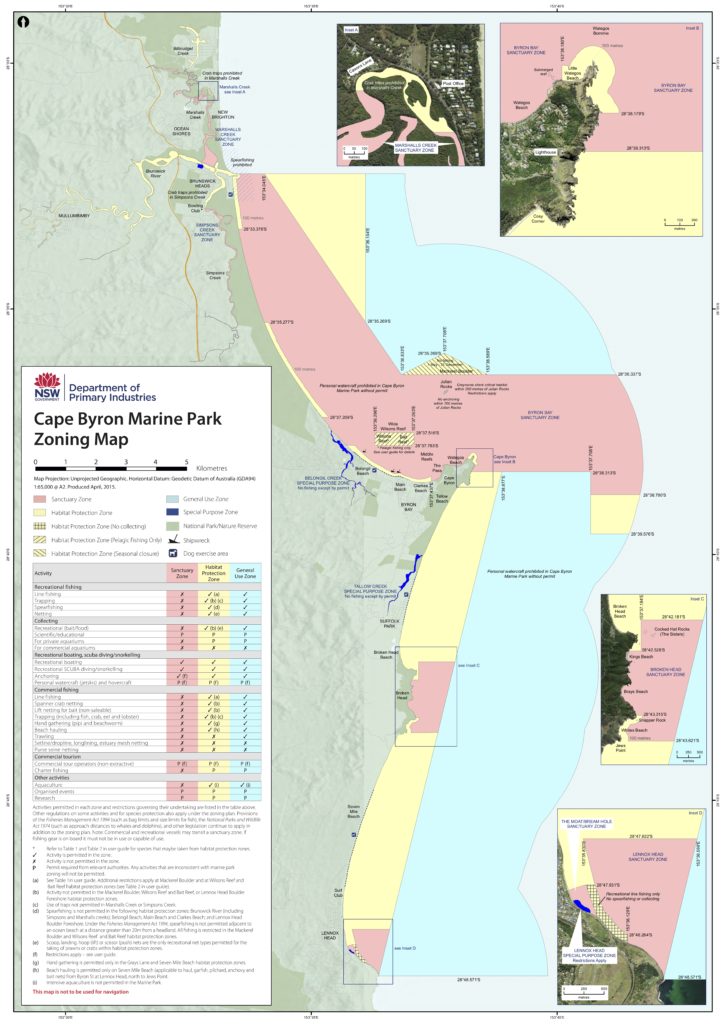Site 13: Coastal Conservation
PREV NEXT
Starting in the early 1980’s the Byron Bay community began establishing nature reserves, national parks and marine parks to protect areas of coastal environmental significance. Now more than 50% of the combined land and sea area stretching five kilometres either side of high tide between Brunswick Heads north of Byron Bay town and Lennox Head south of the town is incorporated in parks and reserves.
The largest protected area is incorporated in the 22,000-hectare Cape Byron Marine Park established in November 2002. It extends for three nautical miles (5.55km) from mean high water level and includes the sea bed. It is divided into four zones: habitat protection, sanctuary, general use, and special purpose zones. Recreational and some commercial fishing are allowed in the Park.
The Park includes rocky, sandy and coral sea-bed, small rocky islands, exposed and sheltered beaches, riverine estuaries, coastal creeks and lakes. It provides a “safe home” for many species of sea-mammals, fish, seabirds, shellfish marine plants and protects threatened species such as little terns, grey nurse sharks and sea turtles. Humpback whales come close to the Park’s shores on their annual migrations.
The Julian Rocks Nguthungulli Nature Reserve, established in 1961 and popular with divers and snorkelers, and sites of cultural significance to Indigenous people such as Julian Rocks(Nguthungulli), Cocked Hat Rocks(Three Sisters Rock), Cape Byron and beaches around Broken Head as well as Arakwal National Park are included in the Park.
There are five land Nature Reserves covering 1310 hectares in the Byron coastal area (Marshalls Creek, Brunswick Heads, Tyagarah, Cumbebin Swamp, and Broken Head). They incorporate coastal sub-tropical forest, wetlands, salt marsh, dunes, coastal heath, swamps and riverine environments.
The Cape Byron State Conservation Area of about 98 hectares represents the remnants of the Cape Byron Headlands Reserve created in December 1885 to protect native flora and for recreation purposes. This 1885 initiative provided the model for coastal environmental protection actions of a 100 years later that created the reserves and parks in Byron’s coastal areas residents and visitors value and enjoy today.
